About five months prior, I had the chance to visit Chibusu for the first time. It is a special town, with greater borders encompassing the western “limb” of Maoxian (茂县). But I had mis-characterized what Chibusu (赤不苏) is, and what lies further, within (and at much higher altitude). To be fair, my map’s visual description of this geographic region is lacking, and I foolishly relied mostly on just a few English-based online resources at the time. Another lesson learned with time, truly. As luck would have it, I would come across another map.

The town of Chibusu itself is not so large, and the personal map I had been using doesn’t share any details beyond a small cluster of icons at the area’s shoulder. By chance, while in downtown Fengyi one evening, I walked past a more descriptive map of Maoxian. It was on the screen of a street kiosk in a recently developed tourist area. I’ll take it. On this random map I spotted a location in the far end of the limb that I had never heard of before but had always wondered if there was anything there. I had to go. That would be the furthest west I’d ever ventured in the region.
The place is called Weicheng (维城), and while it is rather isolated, it has a lot to say. The name itself loosely translates to “preserved city”. I wonder when it might have been named so. It is not an official town, but a village (or township) within Chibusu. It is not easy to reach. If any place in my travels deserved a warning before attempting to visit, it would be this one.
Our entry to the village is slightly eventful. It starts out somewhat familiar, as it follows the path to Chibusu’s “center” which I had visited previously, until we bypass that location’s entry in order to go west. Just a bit further after this turn, we come across a simple bar gate blocking the way. An elderly woman is the attendant. A very small child is with her, playing. The elder doesn’t react when we approach, she seems focused on babysitting — until our driver gets her attention. She opens the gate for us, and we pass through. We’re still at pretty low ground right now, allowing me to see down the road quite far. I don’t see any other vehicles or people moving through.

The road is long but initially straight and clear, allowing our driver to blaze through. He does not hold back on the pedal. Some of the mountain faces flanking the road are of a new texture I have rarely seen. Highly serrated, aggressively sloped, scaly with an odd wetness. These alternate throughout with the more traditional type — the still-jagged-but-able-to-foster-basic-life kind. That kind is at least able to grow some basic plants and grasses to smoothen out their texture; these new ones are completely rock. Another type, in the distance, are the grand snow-covered peaks, which appear larger and closer than anywhere else I’ve observed in Maoxian. We soon find our mountain, where our destination is scattered above, and my driver friend reduces his speed so we can begin the winding ascent.
The road up is as treacherous as I’ve encountered. Looks can be deceiving, sure. Or maybe we are blessed with the greatest driver in Sichuan. At times the road up is quite literally half-gone, crumbled away with the collapsed ledge. There is just enough space to fit however, but it takes careful maneuvering. At other times the road is disabled from the opposite side, where rocks have fallen down from above, requiring us to take the edge-side. Very slowly I should add. More than once we simply need to drive atop rocks the size of heads. The sharp turns are not as bad as on Goukou mountain, however. The stretches here are much longer, with more forgiving angles and a more gradual slope. It’s the road quality and environment that stress me out. But I’m not the one driving, thankfully. I am too afraid to stop and take photos on the ascent / descent.
Once at high altitude, we begin to see scattered signs of a village. But it’s not at all like the clear greeting signs found at other locations. We can’t tell exactly where we should go, the village is decentralized, and the signs are more like esoteric instructions than helpful answers. We’ll need to explore around figure it out. But at least the road up here transitions into something resembling a stable path; the terrain levels out somewhat, making the location feel sort of like a plateau as small clusters of stone houses begin to appear.


There’s still one last obstacle. As we transition into the village, we notice a group of three men huddled around something in the middle of the road. Their appearance is best described as the classic “fatigues-style”. There is little space on the road, so we have to stop and see what is going on. They are reviewing a slain boar on the ground. Seems they are in the process of moving it out of the way — following a successful extermination. I manage to understand none of what they say to our driver, the dialect is too incomprehensible. But we are able to squeeze through and continue driving upwards. Throughout our journey around Weicheng, we would see various beasts, often in small groups and very skittish.
Shortly after, we approach a relatively active community. A healthy number of homes decorate the hill, sure. And the adjacent plots are clearly being cultivated patiently. At the same time, there seem to be as many homes here marked with a risk-of-collapse warning as there are homes without. We enjoy a brief stroll through without getting deep in the details of the neighborhood. We speak with a friendly middle-aged couple working in the field. They tell us they live here for the moment, but they have another home elsewhere. I suspect it is like the situation described by our resourceful friends on Goukou mountain. We say goodbye to them and exit the community to see what’s ahead.
That would be the last time we would encounter other people up here.

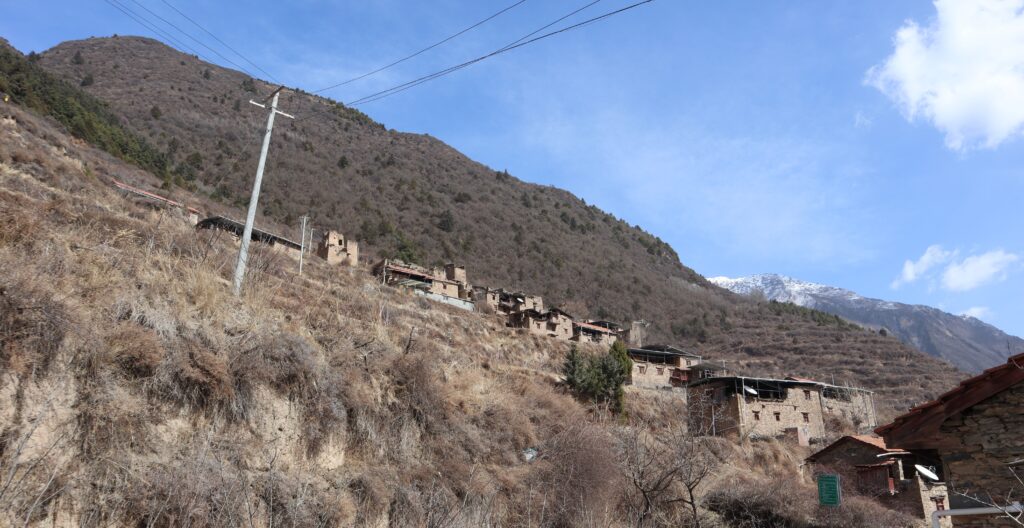



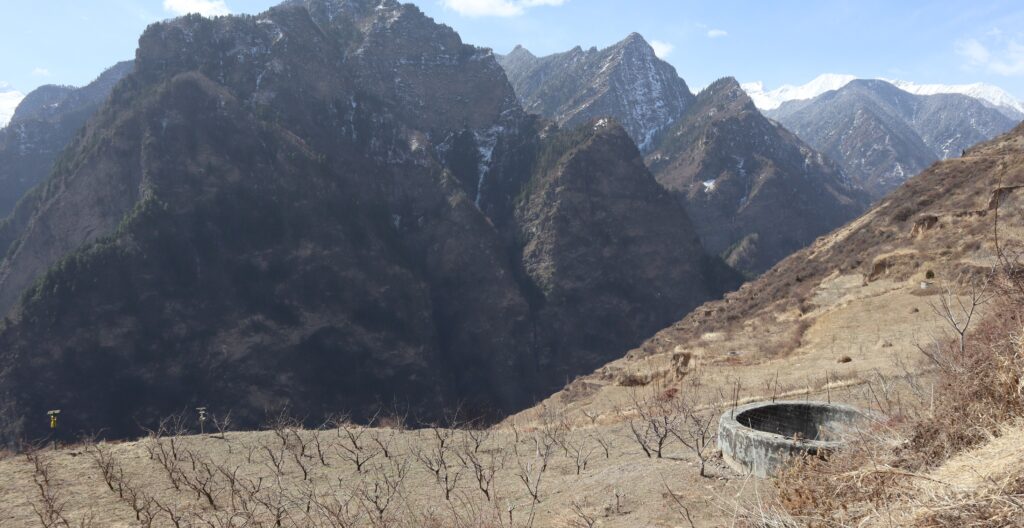


Further up the road, we discover a very loose gate to the first of many pastures out here. There is a sign telling to keep the gate closed for obvious reasons. The flat field makes for a great viewing area to gaze out at the mountains. A tiny viewing platform sits at the edge. The mountains’ arrangement is less chaotic looking at this height and position than when viewed at lower ground. Nonetheless to be in the midst of the transition into the Tibetan Plateau is quite dramatic.
In the distance, a small herd of yak can be seen on the move. They do not seem panicked but are definitely uninterested in humans.


We proceed further, encountering a few different animals on the road. Until the road appears to end. A group of buildings and homes sits here. There is a small community center even. Some of the homes look rather elaborate. None of it looks that old. But there are no people here, and nothing looks to be recently maintained. Besides one of the buildings with a collapsed roof, everything appears still standing, just featuring an odd lean. Imagine a balcony built with only half the adequate number of supports. Eventually, the whole thing starts to sag.
Personally, I would guess a few of these homes are occupied for part of the year or are “let’s come back another time and fix things up” situations, but none appear to be the permanent living quarters that their faded grandeur would entail. On the street near the old community center, I see a well-preserved yak skull with both of its horns still mostly attached. Most of the lower skull and jaw are gone. Was this a decoration, or from a herd?
Again, there are some grand views of alpine peaks to take in. But through the trees near the end of the road, we can see another cluster of active-ish buildings not terribly far away. But there’s no visible path to it from where I stand, and it’s at lower altitude. Possibly it requires going back down to ground level and taking another road. In any case, I’m told that that is the actual last of Weicheng’s communities, making three total (two of which I have now seen). Maybe that’s where this town’s residents went. But two is enough for me.
So, we turn back around. To try our luck on some obscure paths passed earlier, going up the mountain, where there are other kinds of sights.

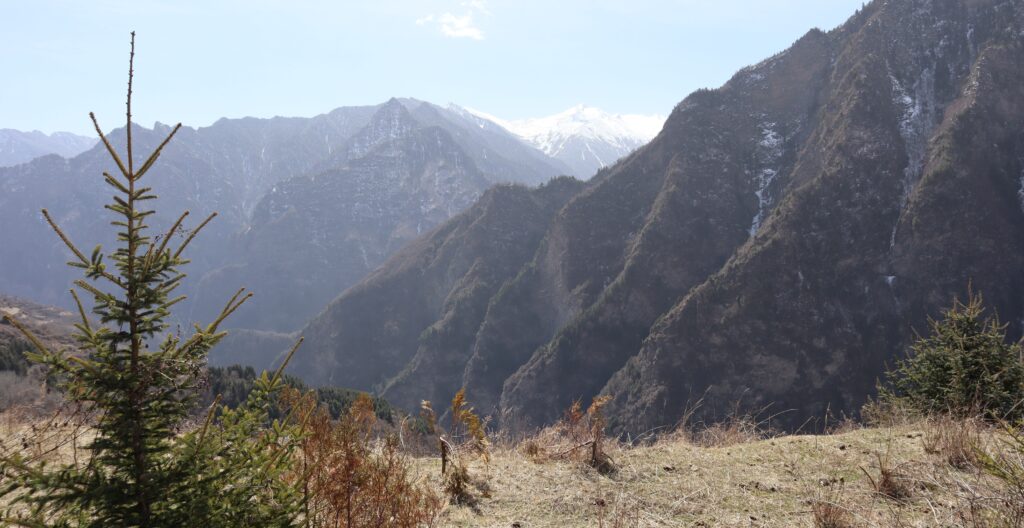


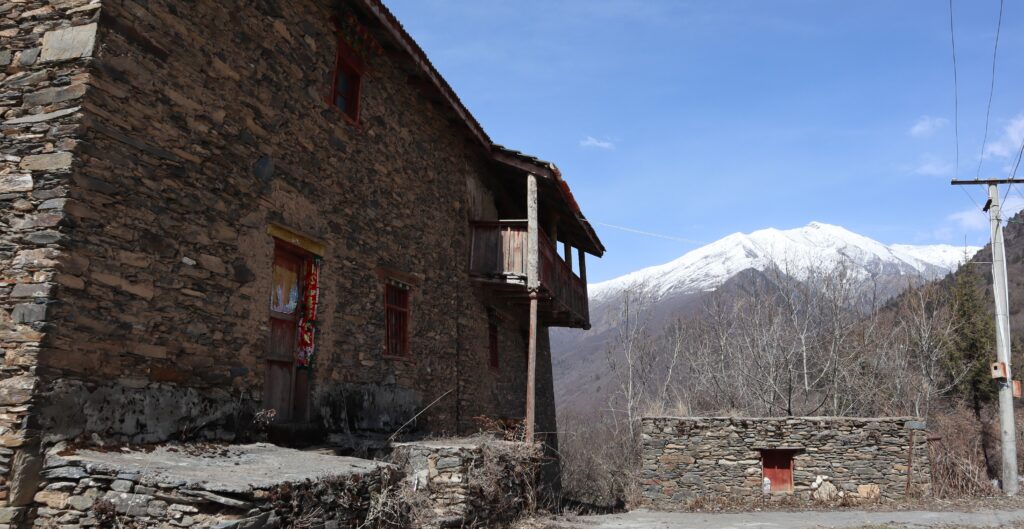
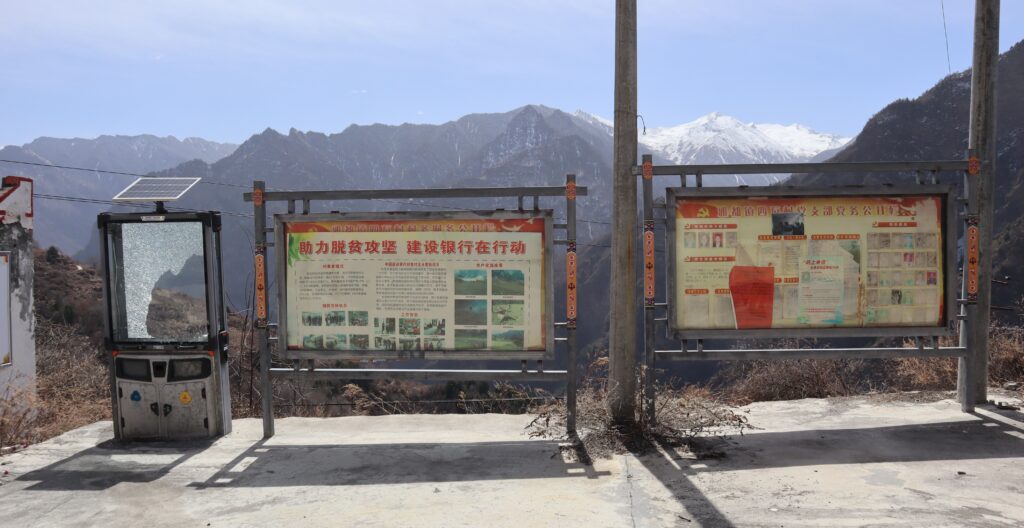

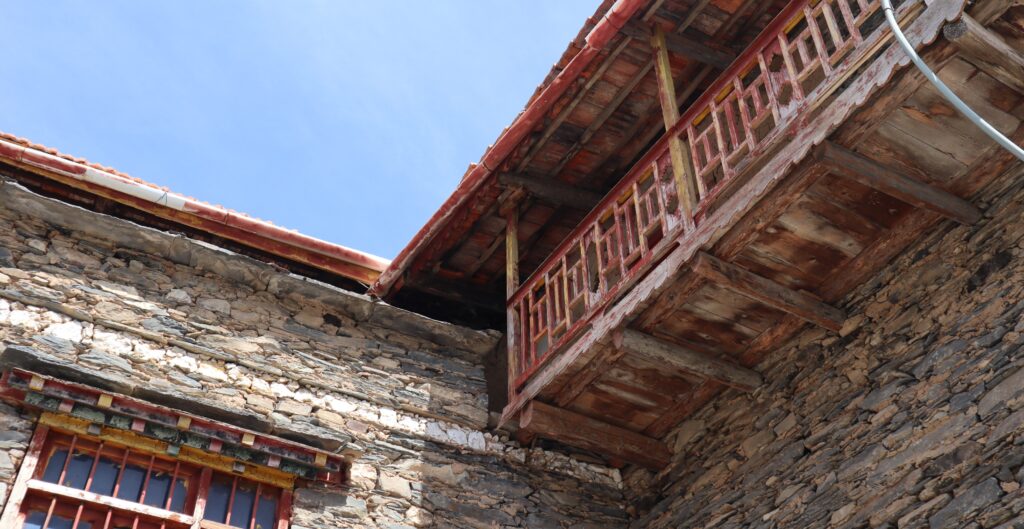
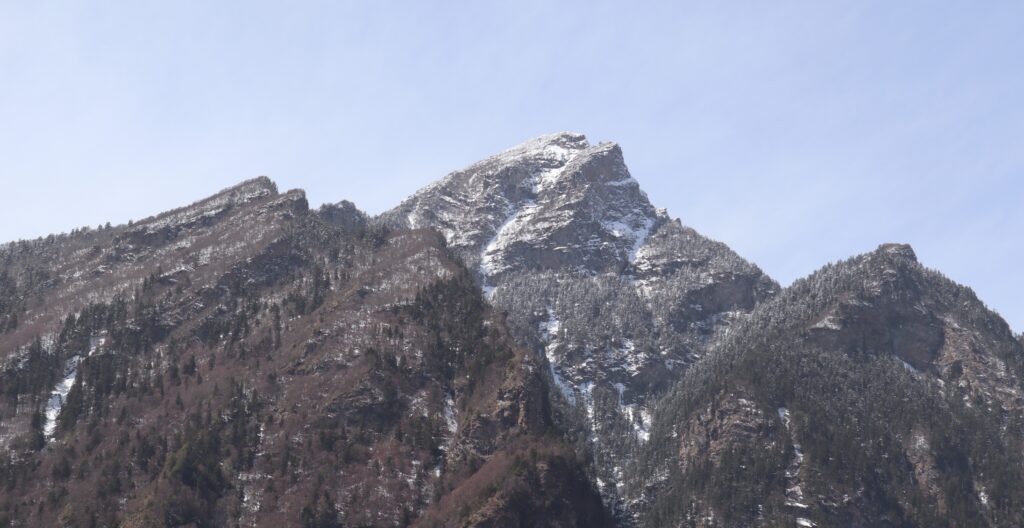
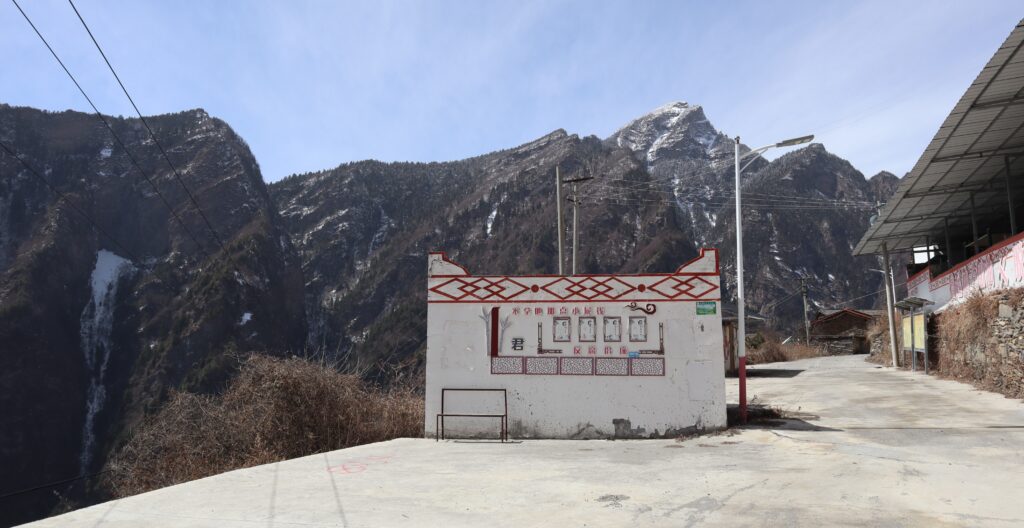

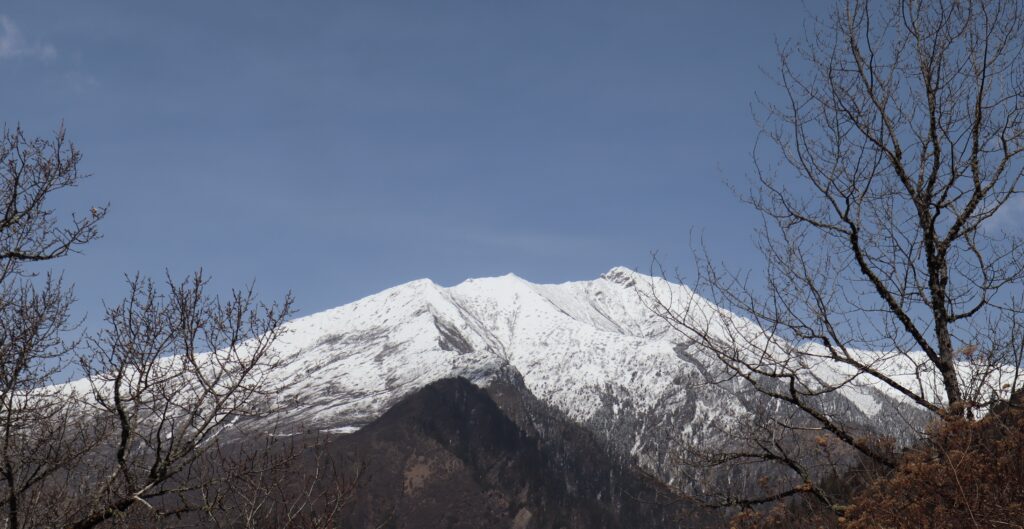


Leave a Reply